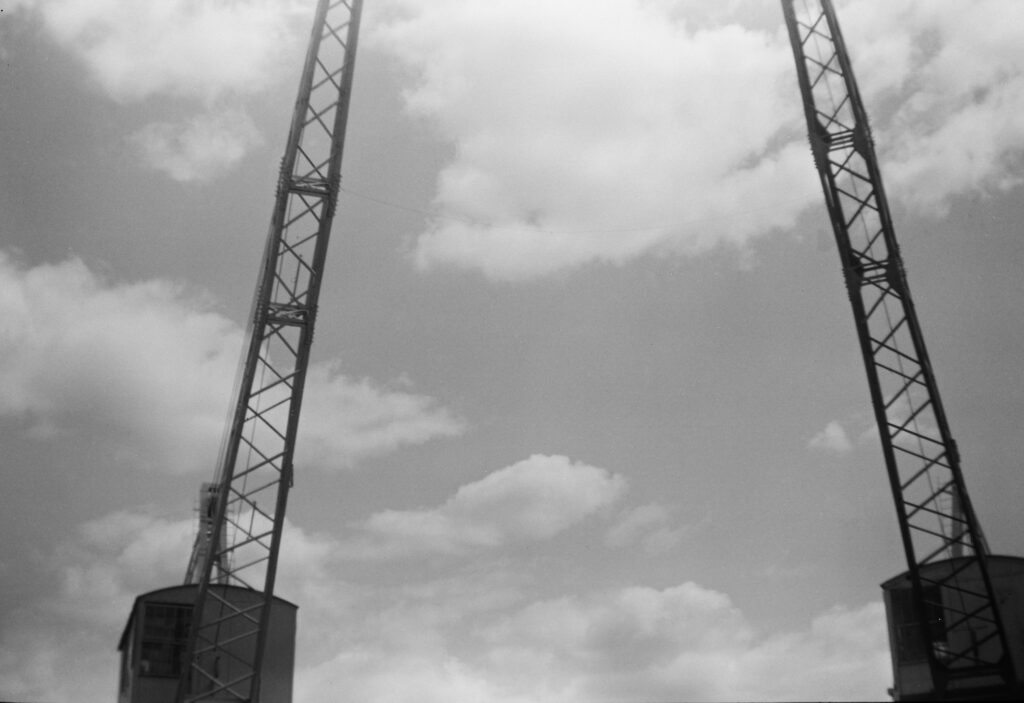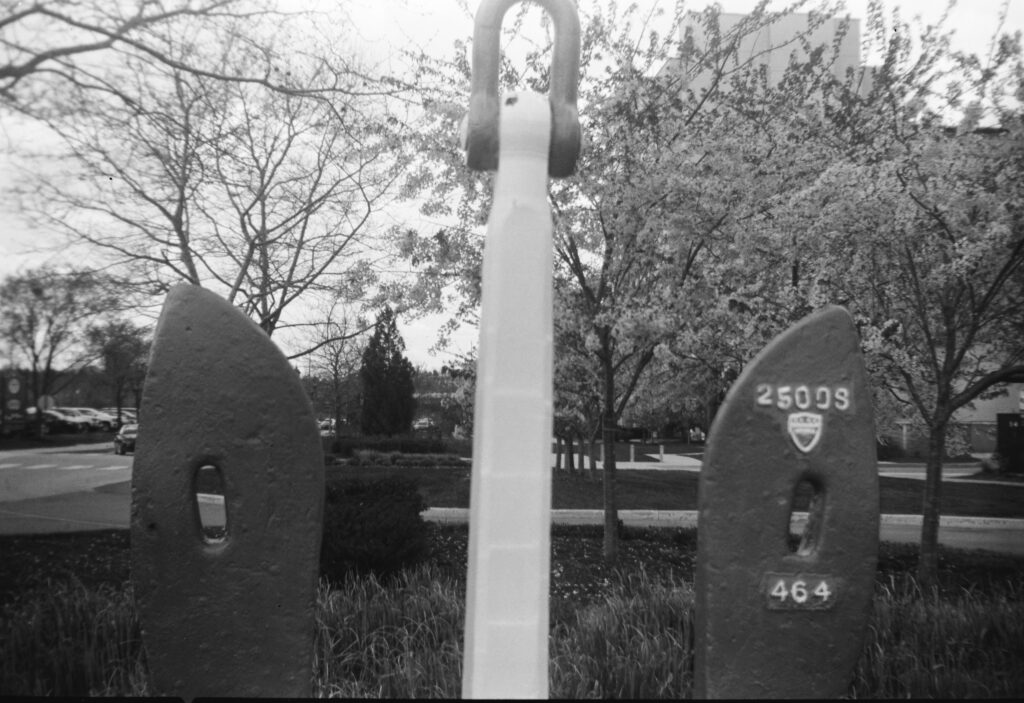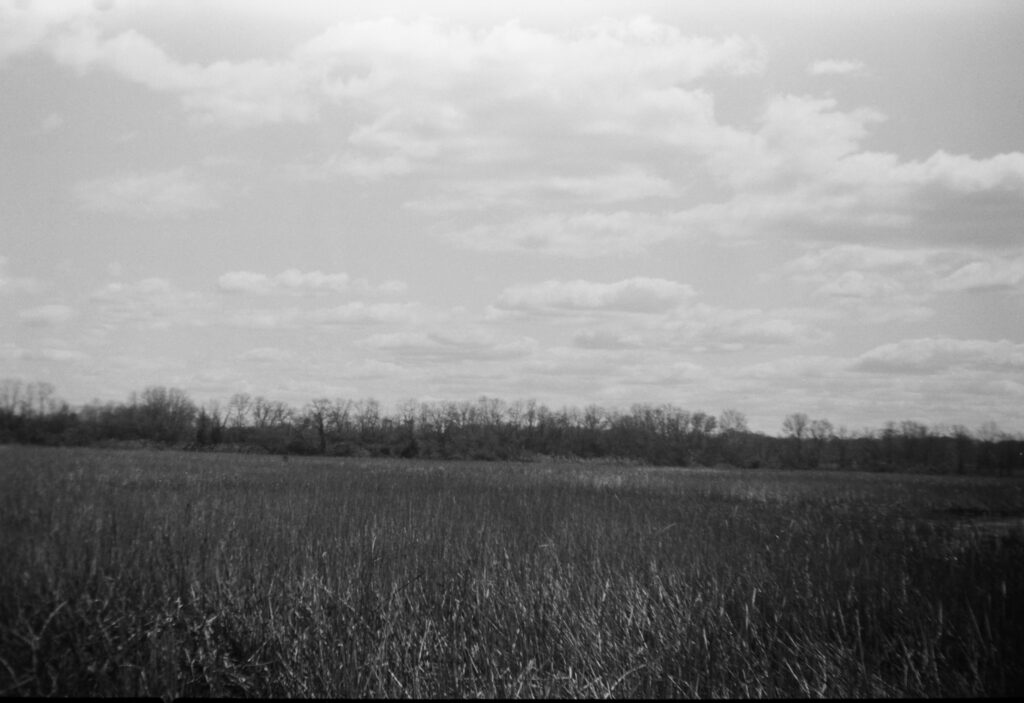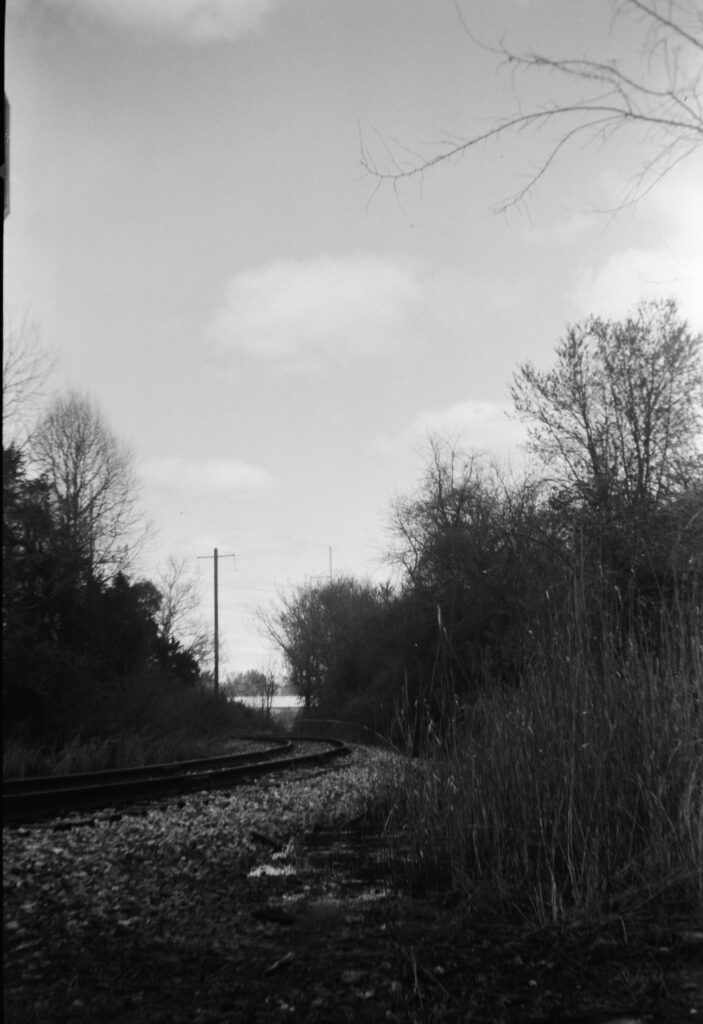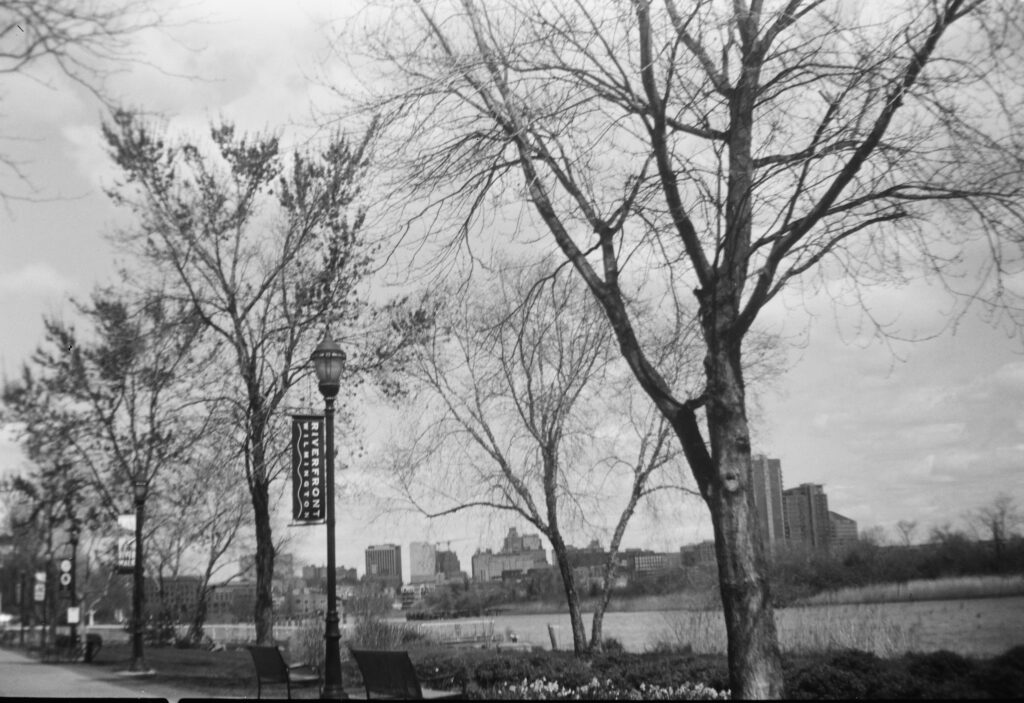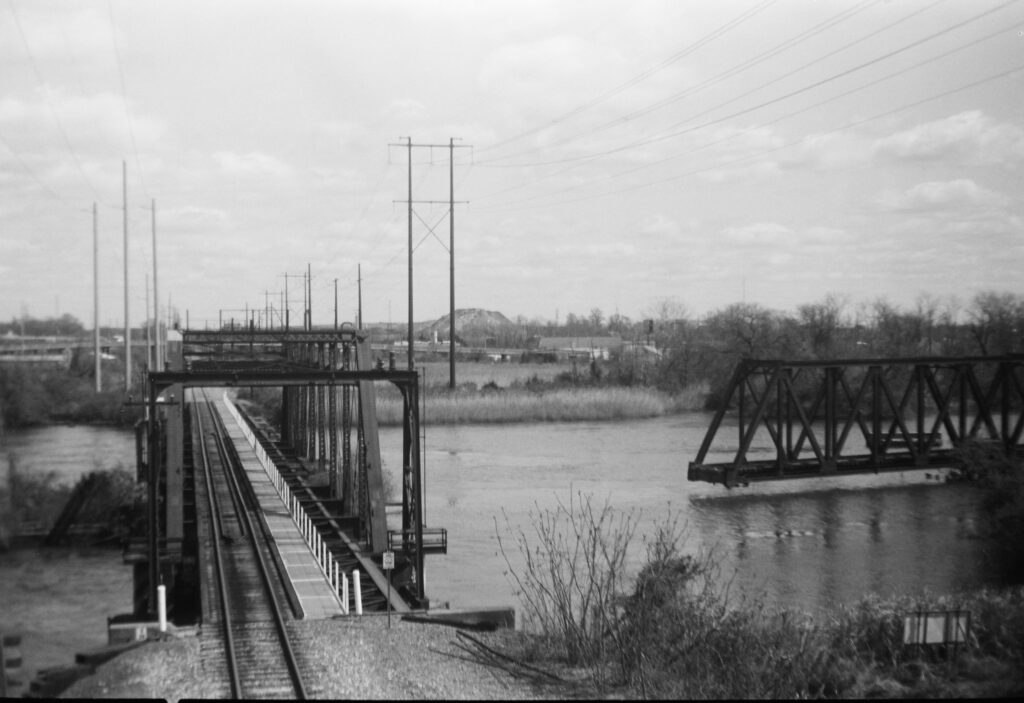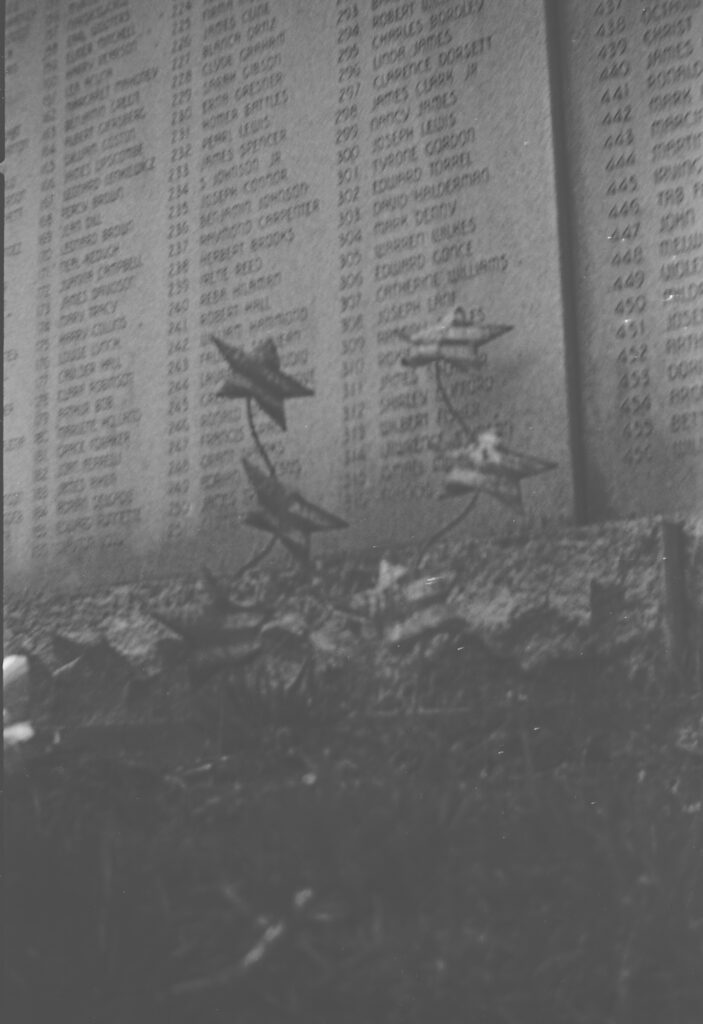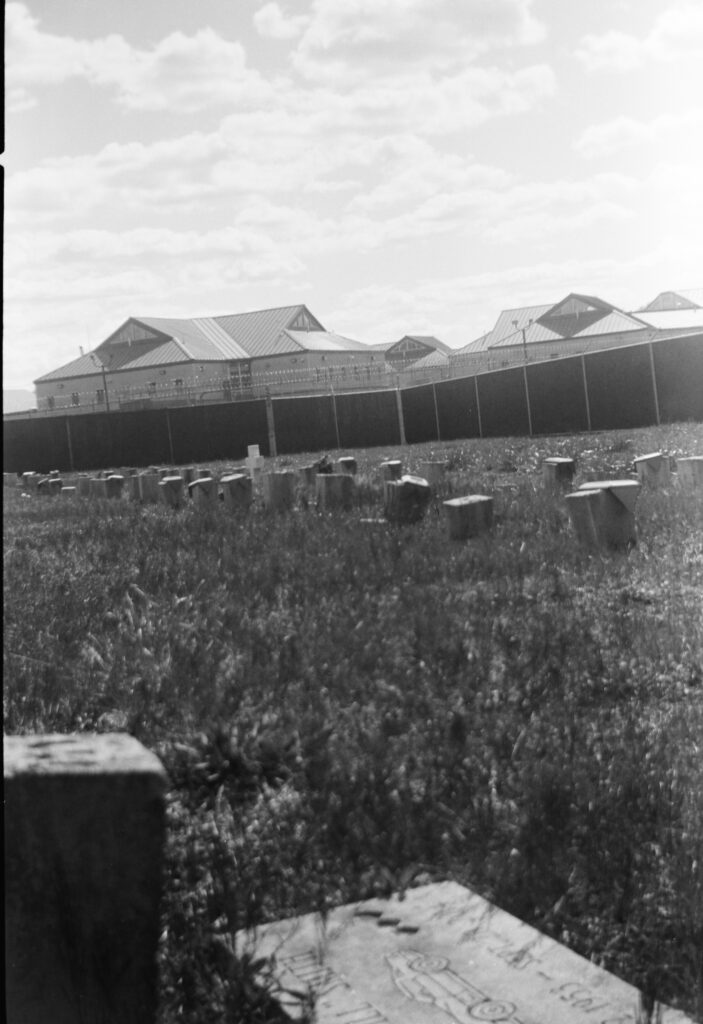The camera obscura was the device that laid the groundwork for photography, centuries before the advent of film. The concept dates back to ancient times, with references found in the writings of Chinese philosopher Mozi and Greek philosopher Aristotle. Essentially, the camera obscura is a darkened room or box with a small hole or lens on one side, through which light passes and projects an inverted image of the outside scene onto a surface inside.
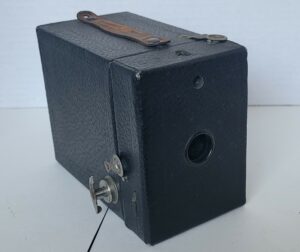
Camera: No 2 Hawk-Eye Model C
Film: 120 Fomapan 100
The vintage “No 2 Hawkeye Model C,” a box-type “Brownie” camera, draws its inspiration from the fundamental principles of the camera obscura. The “Brownie” cameras, introduced by Eastman Kodak in the early 20th century, embraced this concept of the camera obscura by creating an accessible, easy-to-use camera for the masses. The No 2 Hawkeye Model C, specifically, continued this tradition with its box design and fixed focus lens, simplifying the process of photography much like the camera obscura had done centuries earlier for artists and scholars. By making photography portable, affordable, and user-friendly, the “Brownie” cameras democratized the art form, echoing the camera obscura’s role in making visual representation more widely achievable.
Introduced in 1926, this camera featured a simple, robust design that made it exceptionally user-friendly and affordable. Constructed primarily from cardboard and covered in imitation leather, the Model C had a fixed-focus meniscus lens and a rotary shutter, which together provided straightforward, reliable operation. The camera used 120 roll film, producing 2 1/4 inch square negatives, which were large enough to capture clear, detailed images. Its ease of use and low cost made photography accessible to a broader audience, including children and casual photographers, fostering a new wave of personal and artistic expression. It was literally the equivalent of “point and click,” then send the film in for developing.
